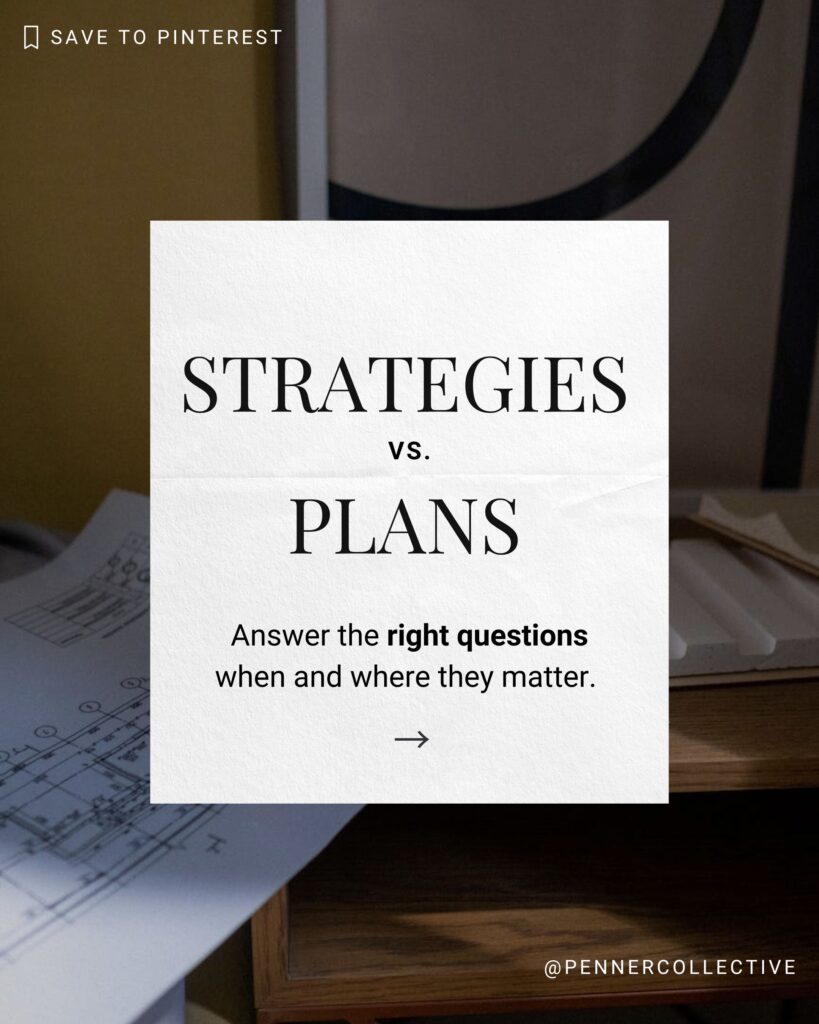A lot of terms get thrown around in the marketing world, often with varying degrees of accuracy. We have our brand strategies, our marketing strategies, a campaign plan, a project plan, a tactical plan. What’s the same?! What’s different? What goes in each?
For the busy, TL-DR-inclined:
- Brand strategy: Top Top level overview, informing where your brand sits in the market and the story you tell (‘who‘, ‘where, ‘what‘).
- Marketing strategy: Addresses how you’re communicating your brand (and specific products/services) to your audience (the ‘how’).
- A campaign strategy is same as marketing strategy, but with a more specific content focus and duration
- Tactical (or ‘campaign’) plans: The content you need to develop, along with when/where you publish it (the ‘what‘, ‘where‘, ‘when‘).
Let’s first group these into their likeminded categories, distinguishing between strategies and plans. As a whole, strategies look at what you’re trying to achieve (your objectives) and how you’re going to get there. Your plan plots out what you need to do and develop to make the strategy happen.
Strategy
Brand strategy
This sits at the top level and is always my first priority when working with brands. Think of your brand strategy as the foundation on which all other strategies and plans are built on. Like the ‘house built on sand’ metaphor, you have to have your brand strategy firmly in place for everything to then be built upon it.
So what does your brand strategy include?
Your brand strategy establishes your audience, your positioning, and your expression. It stakes your place in the world, giving you clarity on who you’re talking to and the value you offer them. It’s how you’re different from other players, helping you focus your message. At a glance, it includes your:
- Audience / customers
- Internal identity – mission, vision, purpose, etc.
- Competitors – providing your positioning
- Value proposition & promise to the customer
- Brand story / messaging
- Expression – the style in which you tell your story
Marketing strategy
This gets right to the heart of brand/branding vs. marketing. Your marketing strategy takes a step towards the practical, as far as strategies go. It breaks down who you’re talking to, the key messages, and the ways you are telling those messages. It will always tell you what success looks like and how you’re measuring it (your ‘key performance indicators’ / ‘KPIs’). And finally, it includes any channel-specific strategies (e.g. your social media strategy). You don’t need separate strategies for different channels – let’s keep things simple and concise.
A marketing strategy includes your:
- Objectives – what you’re trying to achieve
- Strategic approach – how you’re going to achieve it
- KPIs
- Customer segmentation – and how your approach for each differs
- Customer journey – from ‘awareness’ through to consideration and ‘acquisition’
- What content is geared to each stage? What messages are included where? What channels are you using across the journey?
- Channel-specific approach (e.g. content pillars)
You can download my marketing strategy template and example if you’d like a firsthand look and a base to work from!
To note, a campaign strategy is simply a marketing strategy yet more narrow in focus. It can be your go-to-market strategy or a specific product launch or sale. It has all the same elements as a marketing strategy, yet is specific in scope and has a shorter time horizon. There is a beginning and an end to a campaign strategy, while a marketing strategy could address the year in full.
Plans
Campaign / tactical plans
The beauty of the strategic planning process, is that once you have your brand strategy and marketing strategy in place, your campaign plan (or ‘tactical plan’) becomes the easiest document you’ll ever write. This is essentially a list of content you need to develop bring the campaign to life, which is wonderfully clear. Because of the work you’ve done, your foundation is strong (brand strategy) and your direction is clear (marketing strategy). Your tactical plan simply lists it out while maintaining the links to the strategy. Your tactical plan should reference back to your objectives and strategic approach, always connecting the tactic with the strategy. Your tactical plan includes quick references to:
- Content you’re developing and the:
- Channel you’re deploying it on
- Audience
- Associated objective and strategic approach (A quick reference to its number/letter in your strategy!)
- In-market date
- Estimated budget
While a campaign plan soon finds it’s way to a project management tool like Asana or Clickup, I like to have one summarising document that reflects the tactics/assets associated with a campaign.
So there you have it. Three core components of your strategising and planning:
- Brand strategy
- Marketing strategy (and campaign strategy)
- Campaign / tactical plans
They’re best developed in that very order, each one building on the other and becoming more specific and action-focused as you go. In our startup worlds, with growth, early traction and results at high priority, it’s tempting to head straight for the tactics. Despite best intentions of ‘coming back to the brand later’, the early time spent in brand development adds dividends to your growth tactics later. You’ll have a defined voice, clarity in messaging, and laser-focus on your audience, making everything that follows more intentional and strategic. I promise it’s worth it!
If you have any questions or want to discuss your strategies and plans, just send me an email!


+ show Comments
- Hide Comments
COMMENT